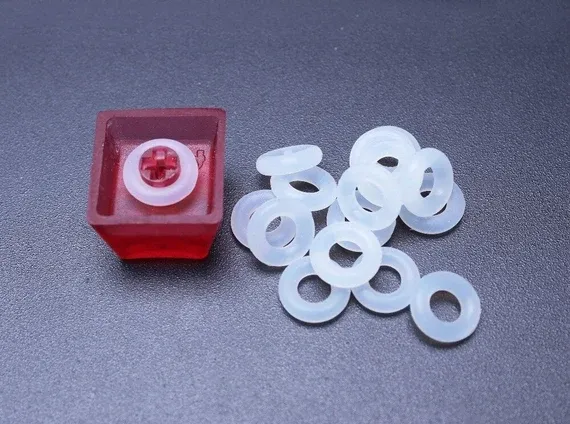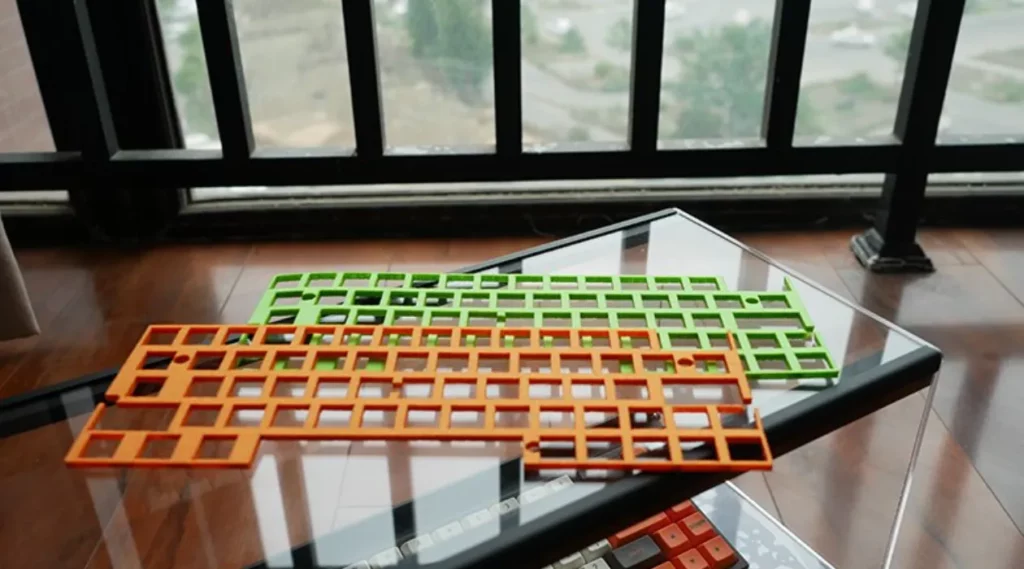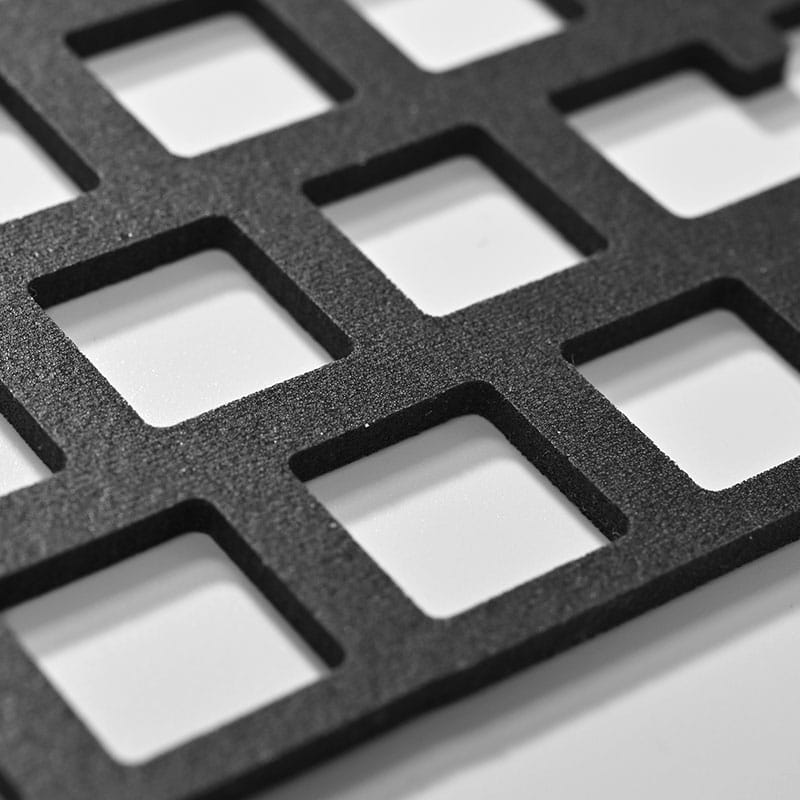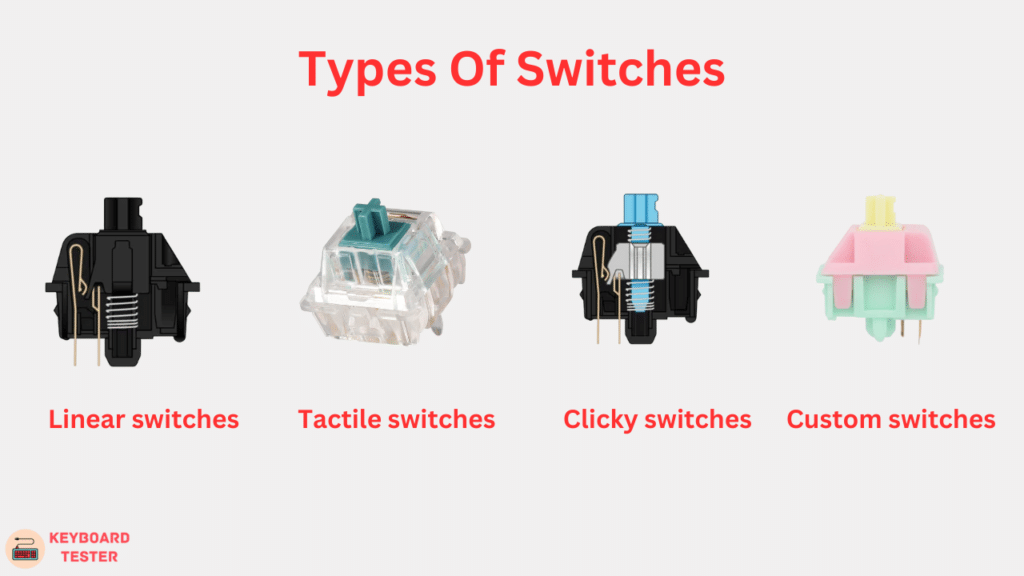How To Make Mechanical Keyboard Quieter?
Mechanical keyboards have become a lot popular in recent years.
This is due to their tactile feedback and satisfying typing experience. But, one of the major drawbacks of using mechanical keyboards is the noise they produce.
The clacking sound of the keys can be disruptive to those around you, especially if you work in a shared workspace or live with roommates or family members.
So, let’s explore various tips and tricks to make mechanical keyboards quieter.

Methods To Mechanical Keyboard Quieter
1. O-rings
These are small rubber rings placed on the stem of the keycap. O-rings absorb the impact of the keycap hitting the switch.
This reduces the noise produced by the keyboard. They work by reducing the distance that the keycap travels when pressed.
It results in a softer landing. You can install or replace the rubber rings of the switches to make the keyboard quieter.

2. Soft Landing Pads
These are small silicone pads placed inside the keyboard housing. Adding soft landing pads absorbs the impact of the keycap hitting the switch.
Thus, reducing the noise produced by the keyboard. They work by providing a cushion for the switch, resulting in a softer landing.

3. Lubrication
Silicone grease or dielectric grease are lubricants applied to reduce friction and noise. Applying lubricant to the stem, spring, and housing of the switch.
But, using the right amount of lubricant is important, as too much can cause the switch to become sluggish.
4. Sound-dampening Foam
A foam material inside the keyboard housing reduces the noise produced. The foam works by absorbing sound waves.
It also prevents them from bouncing around inside the housing. Cutting the foam to fit the keyboard housing and attaching it using adhesive tape.

5. Switch Replacement
There are a lot of quiet switches, like the cheery MX red switch.
These switches have built-in noise-reduction features, such as rubber dampeners or redesigned stems. To replace the switches, you have to open the keyboard.
Then the replacement follows the desoldering of the current switches.
6. Modify Keycaps
Switching to thicker keycaps made from materials like PBT (polybutylene terephthalate) can also help reduce noise.
These keycaps are denser than standard ABS (acrylonitrile butadiene styrene) keycaps and produce less reverberation. Double-shot or thick-walled keycaps are particularly effective in dampening sound.

Tips For Maintaining A Quiet Mechanical Keyboard
These tips help maintain a quieter mechanical keyboard. It allows you to enjoy a more peaceful typing experience.
1. Regular Cleaning
Dirt, dust, and debris can accumulate in the switches and cause them to become noisy. Thus, it’s important to clean your keyboard to prevent this from happening.
You can use a can of compressed air or a small vacuum cleaner to remove any debris from the switches. You can also use a soft-bristled brush to clean the keycaps.

2. Proper Typing Technique
Your typing technique can also affect the noise level of your keyboard. Typing too hard or bottoming out the keys can create a lot of noise.
Instead, try soft typing and use a technique called “hovering.” Here you keep your fingers above the keys and use a light touch to press them down.
3. Minimizing Desk Vibrations
Vibrations from your desk or typing surface can also contribute to keyboard noise. You can reduce these vibrations by using a desk mat or a soft mouse pad to absorb some of the impacts.
You can also try placing your keyboard on a towel or foam to further dampen vibrations.
Understanding Mechanical Keyboards and Switches
The mechanism of a mechanical keyboard involves a switch for each key. The switch consists of a stem that moves when pressing the key.
The stem pushes down on a spring, which returns the key to its original position. When activating the switch, it sends an electrical signal to the computer. This registers as a keystroke.

There are several types of mechanical switches available for keyboards. The color of their stem generally classifies them. Some of the most popular switch types include:
- Cherry MX Blue: These switches are tactile and clicky. They provide a loud clicking sound and a tactile bump on pressing the key.
- Cherry MX Brown: These switches are also tactile, but they are not as clicky as the Blue switches. They provide a slight bump on pressing the key, but they are quieter than the Blue switches
- Cherry MX Red: These switches are linear and do not provide tactile feedback or a click sound. They are smooth and quiet, making them popular in the gaming keyboard category.
- Cherry MX Black: These switches are also linear. But they need more force to actuate than the Red switches. They are popular for typing, as they provide a satisfying feel.
The noise levels of mechanical switches can vary, depending on the type of switch. The Blue switches are the loudest, producing a clicking sound heard across the room.
The Red switches are quieter, producing a soft bump sound. The Red and Black switches are the most peaceful, making only a faint sound on pressing the key.
If you are using blue switches then you can remove mechanical keyboard keys and replace them with brown switches to make the keyboard quieter.
Frequently Ask Questions (FAQs)
Ques 1: How do I make my mechanical keyboard less noisy?
Ans: One way to make a mechanical keyboard less noisy is to use O-rings or dampeners. This will reduce the sound of the keycap hitting the switch.
Another option is to use switches designed to be quieter. Cherry MX Silent or Gateron Silent switches help. Placing a soft mat underneath the keyboard can help absorb some of the sounds.
Ques 2: Can you make a clicky keyboard quiet?
Ans: It’s difficult to completely remove the clicking sound from a clicky mechanical keyboard. It’s an inherent characteristic of the switch mechanism.
But, you can reduce the noise by using sound dampeners or O-rings.
This can soften the sound of the click. You can also switch to non-clicky mechanical switches. Linear or tactile switches are generally quieter.
Ques 3: Why is my mechanical keyboard so loud?
Ans: Mechanical keyboards can be loud because they use individual switches underneath each keycap. This produces a distinct sound when activated.
The keycaps and keyboard housing material contribute to the noise level. Clicky switches make loud sounds.
They have a mechanism that produces an audible “click” when activated. The noise level can also depend on the user’s typing speed and technique.
Ques 4: Do lubing switches make it quieter?
Ans: Yes, lubricating switches can make them quieter. A thin layer of lubricant on the switch mechanism reduces the friction between the parts.
This in turn reduces the sound of the switch as it’s activated. The type of lubricant used can also affect the level of noise reduction.
But, over-lubricating can lead to a mushy feeling, which may not be desirable for some users.
Conclusions
You can use o-rings, silencing clips, lubricants, and switch dampeners to reduce the noise.
Choose any methods that suit your specific keyboard and typing preferences. This will help to achieve the desired level of noise reduction.
All these methods can reduce keyboard noise to varying degrees. But it’s crucial to note that they may also affect the typing feel.
Thus, experimenting with different methods is necessary. Find the perfect balance between quietness and typing feel so that the keyboard meets your needs.






